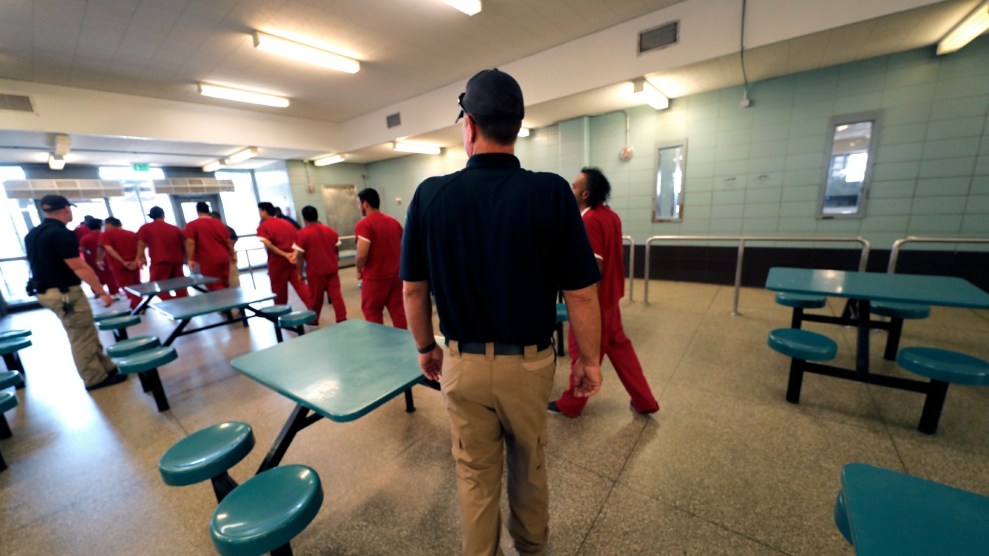For our September+October issue, we investigated the Border Patrol’s sharp growth, its troubling record on civil liberties, its culture of impunity, and its role in shaping the current political moment—one that echoes the anti-immigrant fever that led to the agency’s creation a century ago. Read the whole package here.
This election cycle, former President Donald Trump has made one campaign promise the most prominent: Mass deportation. It is a long-standing vow. In 2016, Trump said he would deport the 11 million undocumented immigrants living in the United States. Once in the White House, he ordered sweeping worksite raids, enacted a ban on travelers from Muslim-majority countries, and deliberately separated migrant families, many of whom have yet to be reunited.
But thanks to outside resistance, internal opposition, sanctuary policies, legal guardrails, and sheer ineptitude, the Trump administration removed fewer than 1 million people from the country—far behind the number Barack Obama deported during his first four years in office.
In a second term, Trump has pledged to fulfill his promise and conduct “the largest domestic deportation operation in American history.” His acolytes, led by hardliner Stephen Miller, have spent years devising legal workarounds to prevent their extreme proposals from being curtailed or killed in the courts.
This time around, they plan to invoke an infamous 18th-century wartime law, deploy the National Guard, and build massive detention camps—and intend on reshaping the federal bureaucracy to ensure it happens, drafting executive orders and filling the administration with loyalists who will quickly implement the policies. “No one’s off the table,” said Tom Homan, the former acting director of US Immigration and Customs Enforcement (ICE) under Trump. “If you’re in the country illegally, you are a target.”
If Trump and his allies have it their way, armed troops and out-of-state law enforcement would likely blitz into communities—knocking on doors, searching workplaces and homes, and arbitrarily interrogating and arresting suspected undocumented immigrants. The dragnet would almost certainly ensnare US citizens, too.
The nation’s undocumented immigrants grow and harvest the food we eat, construct our homes, and care for our young and elderly. They pay billions in taxes, start businesses that employ Americans, and help rebuild in the wake of climate disasters.
Not only would Trump’s plan rip families and communities apart, but it also would have devastating effects for years to come, including on US citizens who perhaps have overlooked how integral undocumented immigrants are to their everyday life. Trump frames immigration as an existential threat to the United States. He has said immigrants are “taking our jobs,” are “not people,” and are “poisoning the blood of our country.” The reality is that if his plan were implemented, American life as we know it would be ruined—even for those cheering for mass deportation.
Here’s how this “mass deportation” agenda would fundamentally reshape the country:
According to a 2016 report by the Center for American Progress, deporting 7 million workers would “reduce national employment by an amount similar to that experienced during the Great Recession.” GDP would immediately contract by 1.4 percent, and, eventually, by 2.6 percent. In 20 years, the US economy would shrink nearly 6 percent—or $1.6 trillion. Trump’s plan would lead to a dire shortage of low-wage workers, which would “bring on a recession while reigniting inflation,” predicts Robert J. Shapiro, a former undersecretary of commerce in the Clinton administration.
“Mass deportation will be a labor-market disruption celebrated by American workers,” Miller told the New York Times last November. Most economists disagree. “The only reason a politician would say such a thing is that they think that lots of people believe it,” says Michael Clemens, an economist at George Mason University. “It’s certainly not based on any research or empirical fact whatsoever.”
Instead of freeing up employment opportunities, findings from one study suggest that the deportation of 11 million undocumented immigrants could result in 968,000 fewer jobs available for US citizens, losses that would be compounded each year the policy remained in effect.
How Undocumented Immigrants Support America
Social Security: Unauthorized immigrants pay $25.7 billion in Social Security taxes, even though they’re not eligible for benefits.
Taxes: In 2022, undocumented immigrants contributed $96.7 billion in taxes—$59.4 billion in federal contributions and $37.3 billion to state and local governments.
Essential workers: During the Covid-19 pandemic, more than 5 million undocumented immigrants were employed in essential industries. As many as 343,000 DACA recipients were also at the forefront of the pandemic response.
Food
Half of all farmworkers in the United States are undocumented. A mass deportation program would lead to reduced domestic production and increased reliance on imports. Pierre Mérel, an agricultural and resource economics expert at the University of California, Davis, says labor-intensive fruit and vegetable harvesting would be most affected. Based on a 2022 study he co-authored, Mérel estimates that a 50 percent decrease in the farm labor supply could result in a 21 percent increase in the prices of hand-picked crops. “If [immigrant workers] just disappeared overnight,” says Andrew Mickelsen, whose family operates a potato farm in Idaho, “[the sector] would be devastated...I do not think that we in this country could grow enough food.”
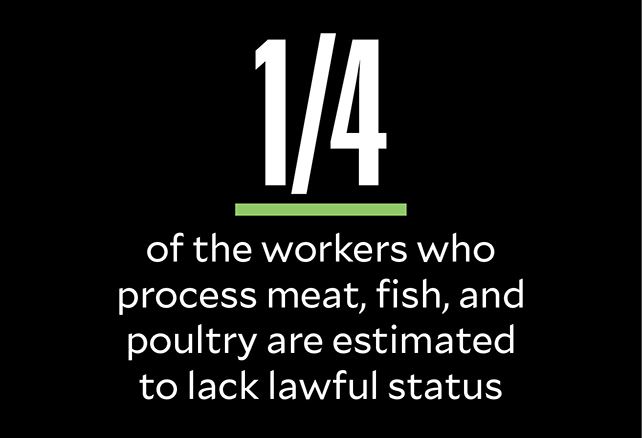
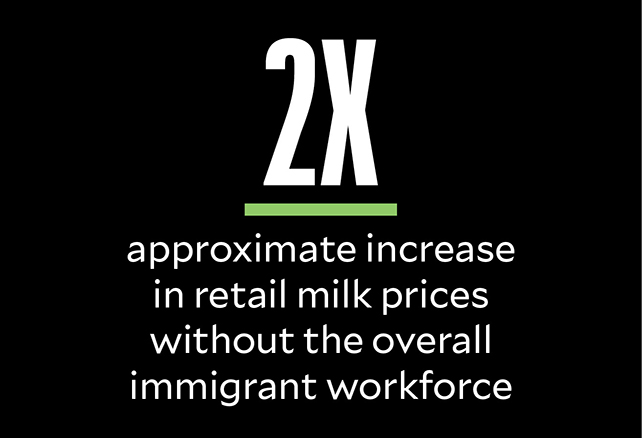
Care
Some 350,000 undocumented immigrants work in health care, with more than two-thirds employed as providers or in supporting jobs. On top of that, more than 160,000 are employed as cleaners and housekeepers. “They are the people that pick our crops, prepare our foods, clean our hotel rooms, and empty our bedpans,” says Rebecca Shi, executive director of the American Business Immigration Coalition. “When former President Donald Trump talks about mass deportations and enforcement, he’s talking about eradicating the type of quality of life that Americans enjoy right now.”
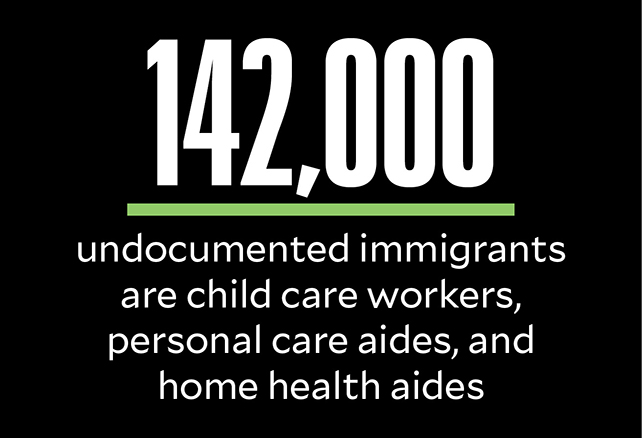

Infrastructure
One in five undocumented workers—1.4 million people—are employed in construction. That’s more than 10 percent of the entire labor force, and 32 percent of roofers. With the industry already facing a shortage of about 500,000 workers, Trump’s deportation scheme would grind the construction of new housing to a halt, turbocharging the affordability crisis. Joshua Correa, a builder in Dallas, estimates a $300,000 house might cost anywhere from $40,000 to $45,000 more if just a fraction of the immigrant workforce is deported. “You can’t build things in the United States,” says Brian Turmail of the Associated General Contractors of America, “without people to build them.” Democratic Rep. Greg Casar of Texas put it more simply: “The economy would collapse.”
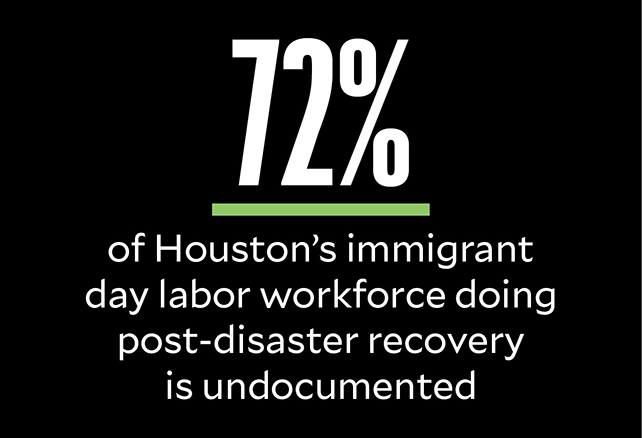
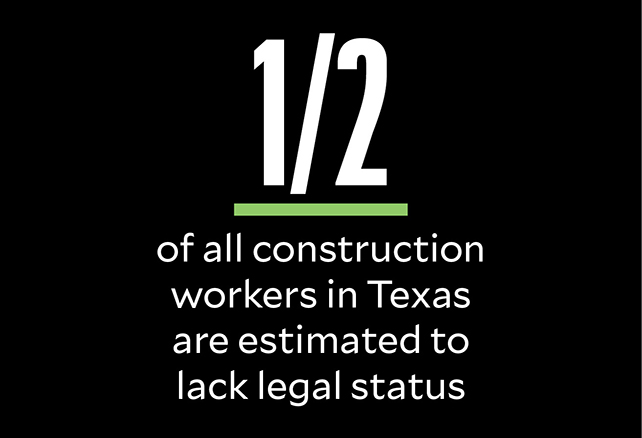
The Profiteers
These businesses already make bank on deportations.
Private prison companies: In 2022, immigration detention center operators CoreCivic and the GEO Group brought in a combined $1.5 billion from deals with ICE.
Surveillance contractors: BI Incorporated, a GEO Group subsidiary, signed a five-year, $2.2 billion contract in 2020 to provide ankle monitors and a phone app that tracks immigrants waiting for court dates. Palantir Technologies, a data analytics company co-founded by Peter Thiel, also has lucrative agreements with ICE for software the agency has used to plan raids.
Consulting firms: Deloitte’s “law enforcement systems and analysis” services for ICE’s removal operations have netted the consulting giant $54 million since 2020.
Charter flight operators: CSI Aviation has an interim contract for daily deportation flights worth $128.3 million.
Some immigration experts and former government officials have questioned the feasibility of Trump's radical plan, citing logistical and legal obstacles. But, even if he only attempts to unleash the full force of the federal government to uproot millions of noncitizens, there could be a lasting toll on immigrants and Americans. The effects of Trump's cruel practice of separating families at the border, known as "zero tolerance," are still felt today even though the policy was eventually reversed. Six years after its implementation, children and parents remain apart.
Children would almost certainly be hurt again. More than 3.4 million unauthorized immigrants have a US-born minor child. Eighty percent of unauthorized immigrants entered the country before 2010, and almost 10 million citizens or lawful residents live in mixed-status homes. One study found a mass deportation program would slash the median income of mixed-status households by almost half, plunging millions of families into poverty.
Even if not fully realized, Trump's plot would crash the economy, leave food fallow in the fields, target vulnerable neighbors, and hurt the very population he claims to want to uplift—the American worker.
Read the rest of our Border Patrol investigation here.





